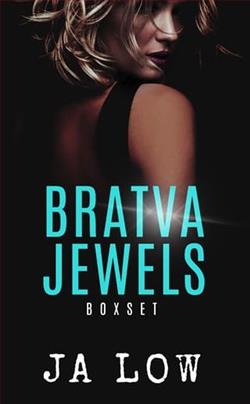Page 2 of The Art of the Matter
He gave it.
‘Phone number?’
‘Er, no phone.’
She gave him a glance as if he had said that he lacked a head.
‘And what is the item, sir?’
‘An oil painting.’
Slowly the details, or lack of them, were teased out of him as her expression became more and more weary. Age unknown, school unknown, period unknown, artist unknown, country – presumed Italy.
The woman in Valuations had a huge crush on a young blade in Classic Wines and she knew it was the hour of mid-morning coffee in the Caffé Uno just round the corner. If this boring little man with his awful little daub would go away, she could slip out with a girlfriend and coincidentally bag the table next to Adonis.
‘And finally, sir, what value would you put on it?’
‘I don’t know. That was why I brought it in.’
‘We must have a valuation from the customer, sir. For insurance purposes. Shall I say a hundred pounds?’
‘Very well. Do you know when I may expect to hear?’
‘In due course, sir. There is a large number of pieces already in the storeroom waiting to be studied. It takes time.’
It was plain her personal view was that a glance would be enough. God, the junk some people passed over her desk, thinking they had discovered a Ming dish in the lavvy.
Five minutes later Mr Trumpington Gore had signed the form, taken his copy, left the hessian package and was back on the streets of Knightsbridge. Still stony broke. He walked home.
The hessian-wrapped painting was consigned to the basement store area, where it was given an identification tag: D 1601.
DECEMBER
Twenty days went by and still D 1601 stood against the wall in a basement store in its hessian wrappings, and still Trumpington Gore waited for an answer. There was a simple explanation: backlog.
As with all the great art auction houses, well over 90 per cent of the paintings, porcelain, jewellery, fine wines, sporting guns and furniture that the House of Darcy offered for sale was from sources known to them and easily verified. A hint of source or ‘provenance’ often appeared in the pre-sale catalogue. ‘The property of a gentleman’ was a frequent introduction to a fine item. ‘Offered by the estate of the late . . .’ was not uncommon.
There were some who disapproved of the practice of offering the general public a free valuation service on the grounds that it brought in too much time-consuming dross and too few items Darcy would even wish to offer for sale. But the service had been devised by the founder, Sir George Darcy, and the tradition survived. Just occasionally some lucky hopeful from nowhere discovered that Grandpa’s old silver snuff box really was a rare Georgian treasure, but not often.
In Old Masters there was a fortnightly session of the Viewing Committee, chaired by the department director, the fastidious and bow-tied Sebastian Mortlake, assisted by two deputies. In the ten-day run-up to Christmas he decided to clear the entire backlog.
This housekeeping turned out to cost five days of almost continuous session until he and his colleagues were tired of it.
Mr Mortlake relied on the fat sheaf of forms filled at the moment of deposit of the picture. Top of his preferences were those where the artist was clearly identifiable. That at least would give the eventual catalogue-writers a name, something close to a date and the subject matter was of course obvious at a glance.
Those he selected as possible for sale were set aside. A secretary would write to the owner to ask if he wished to sell, bearing in mind the suggested valuation. If the answer was ‘yes’ then a condition on the original form specified that the painting could not be taken elsewhere.
If the answer was ‘no’ the owner would be asked to collect the work without delay. Storage costs money. Once the selection was made and authority from the owner received to proceed with sale, Mortlake could select the forthcoming auction for the picture’s inclusion and the catalogue could be prepared.
For minor works by minor artists that had just scraped past Sebastian Mortlake’s watery gaze, the blurb would include phrases like ‘charming’, meaning ‘if you like that sort of thing’, or ‘unusual’, meaning ‘he must have done this after a very heavy lunch’.
After viewing almost 300 canvases Mortlake and his two fellow assessors had broken the back of the ‘off the street’ offerings. He had selected only ten, one of them a surprising piece from the Dutch van Ostade school, but alas not by Adriaen himself. A pupil, but acceptable.
Sebastian Mortlake never liked to choose for the House of Darcy anything with a valuation at sale of less than £5,000. Large premises in Knightsbridge do not come cheap, and the seller’s commission on less than that would not make much of a dent in the overheads. Lesser houses might handle canvases offered at £1,000, but not the House of Darcy. Besides, his forthcoming late-January sale would already be a big one.
As the hour of lunch approached on the fifth day, Sebastian Mortlake stretched and rubbed his eyes. He had examined 290 examples of pictorial dross, looking in vain for that hint of undiscovered gold. But ten ‘acceptables’ seemed to be the limit. As he told his junior staff, ‘We must delight in our work, but we are not a charity.’
‘How many more, Benny?’ he called over his shoulder to the young under-valuer behind him.















